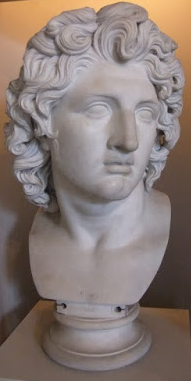 The Golden Larnax | A larnax is a small closed coffin, or "ash-chest" used for human remains. A 4th century BC example found at Vergina in Macedonia is made of solid gold. The tomb where it was found belonged to King Philip II of Macedonia, father of Alexander the Great. |
 | The cremated bones of Alexander IV, the posthumous son of Alexander the Great who was murdered, along with his mother, Roxane, by Alexander's former general Cassander in 311/310 B.C. The ashes had been placed in a silver hydria, crowned by a golden wreath. They were found in 1978 at Vergina. |  |
 | The Derveni Krater is a volute krater, found in 1962 in a tomb at Derveni, not far from Thessaloniki. Weighing 40 kg, it is made of an alloy of bronze and tin. It is dated to the late 4th century BC. Large metalwork vessels are rare survivors and the Derveni Krater is the finest known. |  |
 | Alexander the Great bust. Due to its original inscription, the figure can be definitely identified as Alexander the Great. The work is a copy of a work from 330 BC attributed to Lysippos. |  |
 | The Alexander Mosaic, 100 BC, is a Roman floor mosaic from the House of the Faun in Pompeii. It depicts a battle between Alexander the Great and Darius III of Persia. |  The mosaic is believed to be a copy of an early 3rd-century BC Hellenistic painting. |

No comments:
Post a Comment